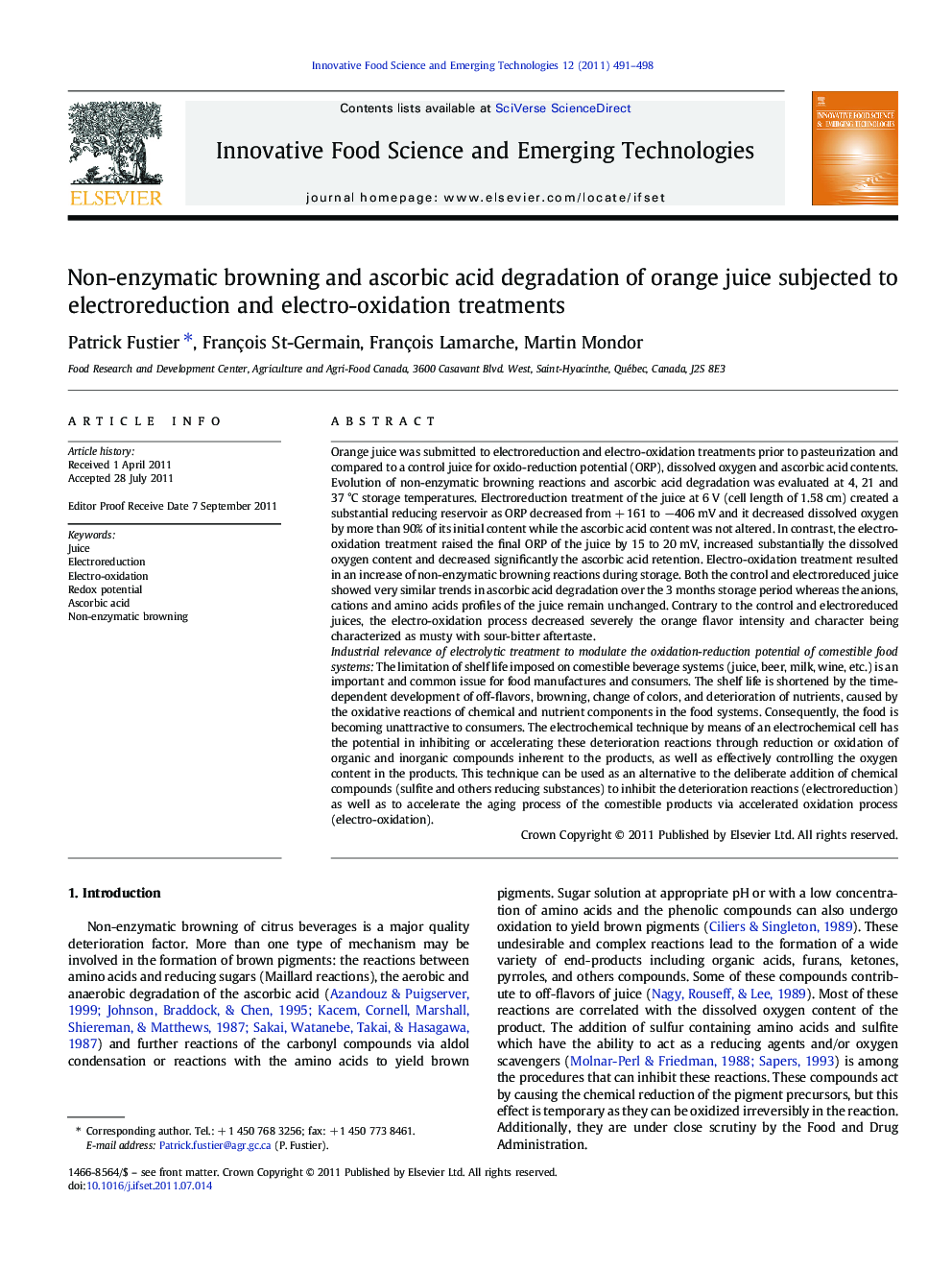| کد مقاله | کد نشریه | سال انتشار | مقاله انگلیسی | نسخه تمام متن |
|---|---|---|---|---|
| 2087022 | 1080626 | 2011 | 8 صفحه PDF | دانلود رایگان |

Orange juice was submitted to electroreduction and electro-oxidation treatments prior to pasteurization and compared to a control juice for oxido-reduction potential (ORP), dissolved oxygen and ascorbic acid contents. Evolution of non-enzymatic browning reactions and ascorbic acid degradation was evaluated at 4, 21 and 37 °C storage temperatures. Electroreduction treatment of the juice at 6 V (cell length of 1.58 cm) created a substantial reducing reservoir as ORP decreased from + 161 to −406 mV and it decreased dissolved oxygen by more than 90% of its initial content while the ascorbic acid content was not altered. In contrast, the electro-oxidation treatment raised the final ORP of the juice by 15 to 20 mV, increased substantially the dissolved oxygen content and decreased significantly the ascorbic acid retention. Electro-oxidation treatment resulted in an increase of non-enzymatic browning reactions during storage. Both the control and electroreduced juice showed very similar trends in ascorbic acid degradation over the 3 months storage period whereas the anions, cations and amino acids profiles of the juice remain unchanged. Contrary to the control and electroreduced juices, the electro-oxidation process decreased severely the orange flavor intensity and character being characterized as musty with sour-bitter aftertaste.Industrial relevance of electrolytic treatment to modulate the oxidation-reduction potential of comestible food systemsThe limitation of shelf life imposed on comestible beverage systems (juice, beer, milk, wine, etc.) is an important and common issue for food manufactures and consumers. The shelf life is shortened by the time-dependent development of off-flavors, browning, change of colors, and deterioration of nutrients, caused by the oxidative reactions of chemical and nutrient components in the food systems. Consequently, the food is becoming unattractive to consumers. The electrochemical technique by means of an electrochemical cell has the potential in inhibiting or accelerating these deterioration reactions through reduction or oxidation of organic and inorganic compounds inherent to the products, as well as effectively controlling the oxygen content in the products. This technique can be used as an alternative to the deliberate addition of chemical compounds (sulfite and others reducing substances) to inhibit the deterioration reactions (electroreduction) as well as to accelerate the aging process of the comestible products via accelerated oxidation process (electro-oxidation).
► Electroreduction as an alternative to inhibit deterioration reactions in orange juice.
► Electro-oxidation accelerate the aging process of orange juice.
► Electrolytic treatments of juice involve complex mechanisms which need further study.
Journal: Innovative Food Science & Emerging Technologies - Volume 12, Issue 4, October 2011, Pages 491–498